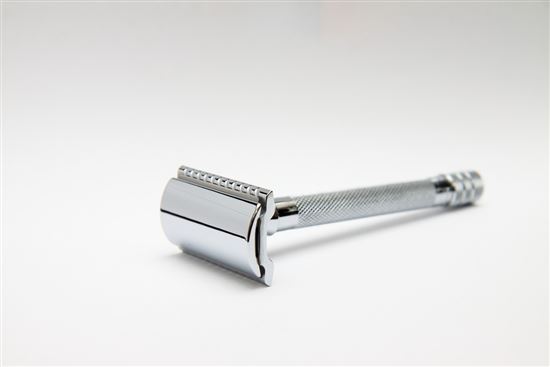Shaving Statistics: 23 Remarkable Facts
Men and women spend that much time shaving? Read on for 23 remarkable shaving statistics you won't believe.
 |
| © mjtmail (tiggy) (CC BY 2.0) via Flickr |
Shaving is one of those things that just about everyone does at some point. For men, it's all about keeping their facial hair in check while women are waging the war against stubbly legs. The practice of shaving dates back to the Stone Age, when things like shark's teeth, porcupine quills and flint knives were commonly used to remove excess hair. (Remember Fred Flintstone's clamshell razor that featured a buzzing bee inside?)
Thankfully, shaving techniques have improved over time and it's no longer necessary to hack away at your face or other body parts with whatever sharp instrument you might have lying around. Cruise the health and beauty section of your local drugstore or supercenter and you'll see dozens of different shaving products, including disposable razors, shaving cream and moisturizers. The CreditDonkey team decided to take a closer look at how much time and money people actually invest in shaving. What we found was nothing short of hair-raising!
1. Razor companies are making big bucks
The razor industry generates some pretty decent revenues for the nearly 60 companies that produce shaving equipment. As of 2014, it's estimated to be worth a tidy $3 billion.
2. That's a big piece of the men's grooming market pie
While women tend to spend far more on toiletries and beauty products, men are shelling out some decent bucks themselves. At the end of 2013, the men's grooming industry as a whole was valued at $6.1 billion.
3. One company is preferred by shavers more than others
Both men and women have plenty of brands to choose from when it comes to razors and shaving supplies, but one rises above the rest. Gillette accounts for the largest portion of razor sales, with parent company Proctor & Gamble claiming a nearly 60% share of the market.
4. But people aren't buying as often
Trends in facial hair routinely change and at the moment, the scruffy look is in. As a result, razor sales took a slight dip for the first time since the recession, leveling out at $2.3 billion in 2013.
5. Replaceable cartridges have taken the hardest hit
Disposable razors offer a certain level of convenience, and they're usually quite a bit cheaper than buying cartridges, which can run from $10 to $20 a pack. Since 2012, the market for replaceable blades has decreased by $85 million while sales of disposables have jumped by $23 million.
6. Younger men are less likely to buy shaving products
Once you hit your mid-20s and get settled into a career, shaving and grooming become the norm, but it's not always the case for the 24 and under crowd. From 2009 to 2013, the number of men between 18 and 24 who said they didn't use any shaving products at all climbed from 13% to 15%.
7. Because a lot of them are growing beards
Even though "No Shave November" and “Movember” have passed, plenty of younger guys are still neglecting their shaving. The number of men aged 18 to 24 who sport a beard increased from 31% to 35% between 2009 and 2013.
8. Even though women aren't always crazy about them
The attractiveness of facial hair is subjective and women are split on whether beards rate better than the clean-shaven look. While 45% prefer baby smooth cheeks, 55% give bearded men the thumbs up.
9. But they don't mind a little "manscaping"
While the majority of men who shave focus on their face, the ladies don't want them to forget about what's below the neck. Thirty-three percent of women are okay with men shaving their back hair while another 17% like a smooth chest.
10. Some men are throwing their razors away permanently
Although the vast majority of hair transplant procedures are performed on men, not all of them are having surgery on their scalp. In 2012, 1.5% of the roughly 310,000 hair restoration procedures involved implantation of facial hair.
11. The summer's actually the best time to grow a beard
Wintertime is when most men decide it's time to start grow their own personal face-warmer, but they're better off getting a head start when it's still hot out. Between March and July, facial hair grows as much as 60% faster compared to January and February.
12. But you might want to think twice about it
The human body is host to a number of microscopic organisms, such as parasites and mites. While most are pretty harmless, they can be downright annoying. If you're thinking of giving up your shaving routine for good, keep in mind that 95% of people have these tiny critters crawling around in their facial hair.
13. One school bans them entirely
The college years are all about learning who you are, and perfecting your look is part of that. If you attend Brigham Young University, however, that rule doesn't apply to facial hair. Students are allowed to have moustaches but shaving your cheeks and chin is mandatory.
14. Electric shavers use is declining
Electric razors can get the job done faster but they don't always guarantee a closer shave. Between 2009 and 2013, use of electric shavers among men dropped by 2%, going from a mean of 4 times a week to 3.7.
15. Shaving is a key part of women's beauty rituals
While the main focus for men is facial hair, women have a lot more ground to cover, starting with their legs. They spend a lot of time getting them smooth too, spending on average 72 days of their life shaving their gams.
16. Ladies are hairier than you might think
Part of the reason women spend so much time shaving is that they have a staggering number of hairs to contend with. Between their legs and armpits, women have a combined 78,000 hair follicles, with an average of close to 17,000 hairs on their legs and another 600 under their arms.
17. Men have about the same amount on their faces
For many men, shaving is a chore but it's a necessary evil if you want to keep the peach fuzz at bay. On average, the human face contains about 615 hairs per square centimeter, making shaving a must if you don't want to look like the Wolfman.
18. Shaving is pretty time-consuming for them too
For men who shave on a daily or near-daily basis, that adds up to a lot of time in the bathroom. On average, men will spend about 3,000 hours (or 4 months) of their life trimming their facial hair.
19. Taking care of their skin is a priority
Slathering up your face with lotion or splashing on aftershave can take out some of the sting of a close shave. Approximately 58% of men aged 18 to 24 and 63% of men 25 to 34 say they regularly use some kind of facial moisturizing product after shaving.
20. Disposable razors are the tool of choice for women
Just like men, women also appreciate the ease and lower expense of shaving with disposable razors. Around 65% of ladies get rid of unwanted body hair using a throwaway shaver.
21. Although some choose to go the electric route
Electric shavers are most often favored by men but some women aren't afraid to use them. In fact, sales of women's electric shavers increased by 22% from July 2013 through June 2014.
22. Staying well-groomed costs women more
Razor companies market shaving products very differently for women versus men, and the result is a higher cost for similar items. Certain brands of women's shaving cream, for instance, can cost nearly 10 cents more per ounce compared to the products geared towards men.
23. While men have cheaper options
The Dollar Shave Club, founded in 2011 as a subscription service offering discounted shaving products for men, has blossomed into a major player in the razor industry. An estimated 330,000 men call themselves customers and at $1 to $9 a month, they're keeping more cash in their wallets without sacrificing the quality of their shave.
Sources and References
Rebecca Lake is a journalist at CreditDonkey, a diamond jeweler comparison and reviews website. Write to Rebecca Lake at rebecca@creditdonkey.com. Follow us on Twitter and Facebook for our latest posts.
Note: This website is made possible through financial relationships with some of the products and services mentioned on this site. We may receive compensation if you shop through links in our content. You do not have to use our links, but you help support CreditDonkey if you do.
Read Next:






